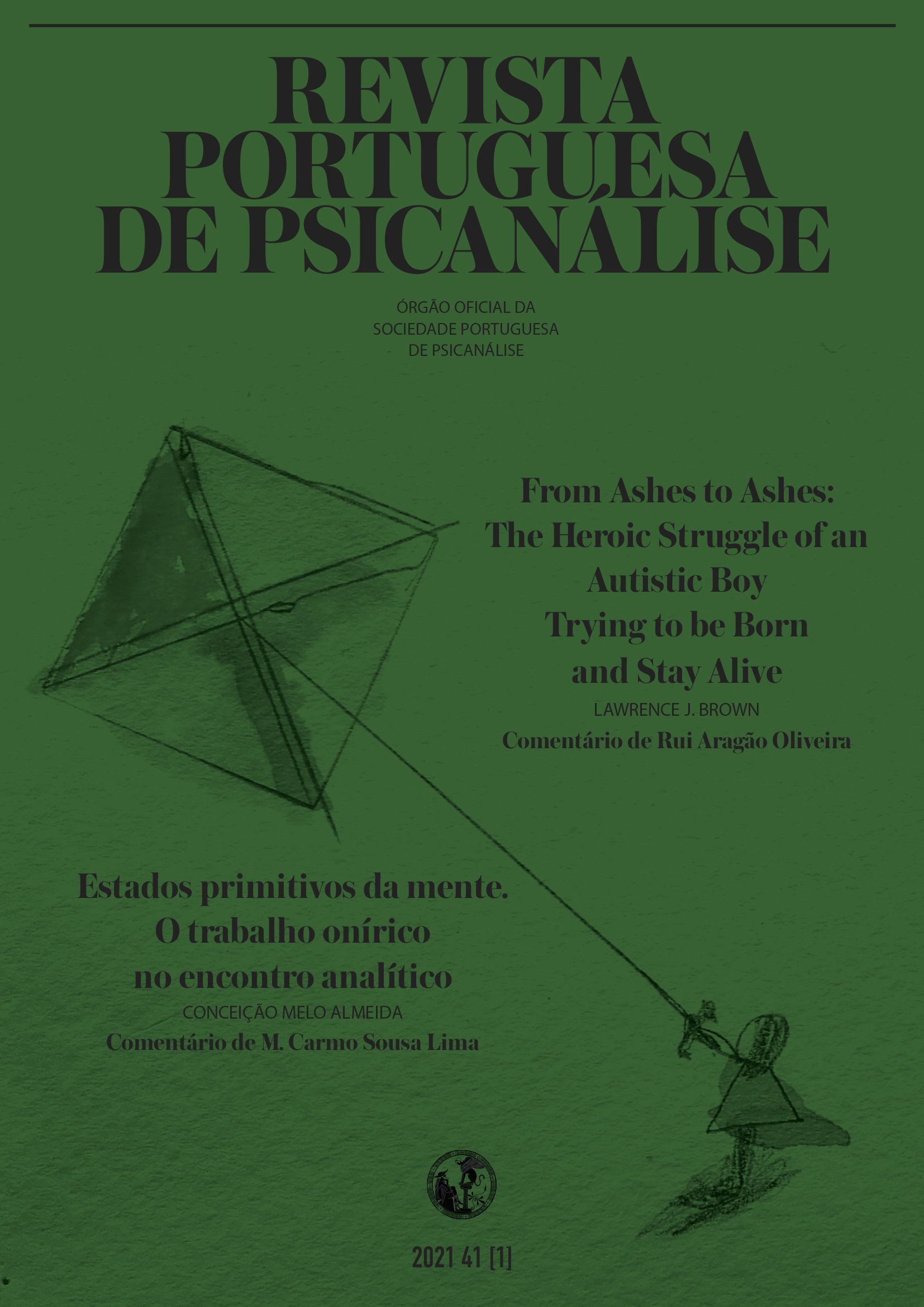Rutura psicótica e a vivência analítica

Abstract
Psychotic rupture and the analytical experience
The author makes essential assumptions about the symbolization process and its failure to address how the unnamed and unrepresented elements that inhabit the psychotic part of the patient's mind maintain an area of ??the mind inaccessible to the analytic process, thus enhancing the outbreak of serious psychic rupture. Such ruptures are sometimes as surprising as they are unexpected and pose unavoidable difficulties in the experience and management of the analytical process. The importance of the analyst's internal setting is then underlined as a container film capable of transforming and integrating the different phenomena that occur in the analytic session.
Keywords
Psychotic rupture, Analytical experience, Failure in the symbolization process
Author Biography
Sandra Oliveira
PHD. Psicanalista. Membro Associado da Sociedade Portuguesa de Psicanálise/IPA.
References
- Bion, W. (1957), Differentiation of the psychotic from the non-psychotic personalities. International Journal of Psychoanalysis, 38: 266-275.
- Bion, W. (1962). A theory of thinking. International Journal of Psychoanalysis, 43: 306-310.
- Bion, W. (1963;(1966)). Elementos de psicoanálisis. Buenos Aires: Paidós.
- Cassorla, R. (1999). Psicanálise e surto psicótico: Considerações sobre aspectos técnicos. Comunicação apresentada no Congresso Brasileiro de Psicanálise, Rio de Janeiro.
- Cassorla, R. (2018). In search of Symbolizations: the analyst task of dreaming, in: H. B. Levine, G. S. Reed, & D. Scarfone (Eds.), Unrepresented States and the Construction of Meaning – Clinical and Theoretical Contributions (pp. 202 – 219). London: Karnac.
- De Masi, F. (2006). Vulnerability to psychosis: A psychoanalytic study of the nature and therapy of the psychotic state. London: Karnac.
- De Masi, F. (2015). Working with difficult patients – From neurosis to psychosis. London: Karnac.
- Luz, A. B. (2009). Truth as a way of developing and preserving the space for thinking in the minds of the patient and the analyst. International Journal of Psychoanalysis, 90, 2: 291-310.
- Ogden, T.H. (2008). Bion’s four principles of mental functioning. Fort Da, 14:11-35
- Segal, H. (1957). Notes on symbol formation. International Journal of Psychoanalysis, 38: 391-397.
- Segal, H. (1978). On symbolism. International Journal of Psychoanalysis, 59: 315-319.
- Steiner, J. (2011). Seeing and being seen. Emerging from a Psychic Retreat. London: Routledge.
- Winnicott, D. (1949). Hate in the countertransference. International Journal of Psychoanalysis, 30: 69-74.
- Zwettler-Otte, S. (2014). A mosaic of ruptures. The EPF Bulletin, 68: 105.